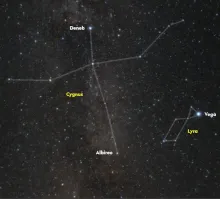Constellation Lyra
Lyra is a small but prominent constellation in the northern sky, named after the lyre, a stringed musical instrument. It is best known for containing the bright star Vega, one of the most luminous stars visible from Earth. Despite its modest size, Lyra holds a significant place in both astronomical and mythological traditions.



